


Interview
Collabs
Turning Heads
Campaigns
Influencers
Trends
ISSUE #16
MAR 25


MOI Global creatives are often asked where we get our inspiration. The answer is always the same: anywhere and everywhere.
Take a stroll through this set of head-turning art, copy, ads, literature, culture, and trends that inspire us. And some of our original work that proves we take notice of what we see, when we look around. Features images and articles from multiple online sources, shared for inspiration purposes only, not commercial use. © various owners (see URLs throughout for more information).
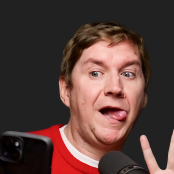

TikTok star, LinkedIn guru and award-winning content creator – few people know the world of social media and influencer marketing quite like Rob Mayhew. With over 130k followers on LinkedIn and 164k on TikTok, he's a master of creative, humorous, head-turning content. So, we asked for his thoughts on the world of social media...

MOI: Tell us about your journey and how you became an award-winning content creator.
Rob: I've been working in the agency biz for over 24 years now. After uni, I went straight into working in client servicing at a Sales Promotion agency and pretty much did shopper marketing until Mark Zuckerberg invented Facebook. From that moment I shifted into Social and have been doing that until very recently.
When the first lockdown hit, I decided to become a TikTok expert. I read everything I could, watched every YouTube video and about 6 weeks later I was offering myself up as a TikTok consultant. I decided to start posting some content so I could understand what works. Within 6 months I had 25k followers, and within a year I had over 100k followers.
I found that the key was to remove all barriers, find your niche, and never stop. I have since grown my LinkedIn audience from 200 followers to 130k and have had the pleasure of partnering with some amazing brands - from Disney+ to Survey Monkey, Starling Bank, Adobe, TikTok, Spotify, Pret and so many more.

MOI: What's your secret to getting attention and turning heads?
Rob: My main bit of advice is to start. You're not too old and you're not too late. You can have 300 google docs with amazing ideas, but you just need to start. The first 100 posts will be rubbish, so just start and get them over with.
As you're exploring with creating content, you'll need to discover what it is that makes you original. Play with the formats. Take risks. But keep showing up and don’t give up. If you're making interesting work, eventually it will find an audience. Make sure you remove the barriers (other people, equipment, location) and start having fun experimenting. Eventually you'll find what you're good at, and soon after brands will be interested to work with you. Once they do, get a good agent (shout out to Raf and Maja in the UK and Jenn and Lori in North America).
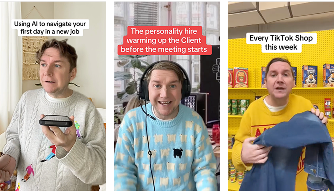


TikTok star, LinkedIn guru and award-winning content creator – few people know the world of social media and influencer marketing quite like Rob Mayhew. With over 130k followers on LinkedIn and 164k on TikTok, he's a master of creative, humorous, head-turning content. So, we asked for his thoughts on the world of social media...

MOI: Tell us about your journey and how you became an award-winning content creator.
Rob: I've been working in the agency biz for over 24 years now. After uni, I went straight into working in client servicing at a Sales Promotion agency and pretty much did shopper marketing until Mark Zuckerberg invented Facebook. From that moment I shifted into Social and have been doing that until very recently.
When the first lockdown hit, I decided to become a TikTok expert. I read everything I could, watched every YouTube video and about 6 weeks later I was offering myself up as a TikTok consultant. I decided to start posting some content so I could understand what works. Within 6 months I had 25k followers, and within a year I had over 100k followers.
I found that the key was to remove all barriers, find your niche, and never stop. I have since grown my LinkedIn audience from 200 followers to 130k and have had the pleasure of partnering with some amazing brands - from Disney+ to Survey Monkey, Starling Bank, Adobe, TikTok, Spotify, Pret and so many more.

MOI: What's your secret to getting attention and turning heads?
Rob: My main bit of advice is to start. You're not too old and you're not too late. You can have 300 google docs with amazing ideas, but you just need to start. The first 100 posts will be rubbish, so just start and get them over with.
As you're exploring with creating content, you'll need to discover what it is that makes you original. Play with the formats. Take risks. But keep showing up and don’t give up. If you're making interesting work, eventually it will find an audience. Make sure you remove the barriers (other people, equipment, location) and start having fun experimenting. Eventually you'll find what you're good at, and soon after brands will be interested to work with you. Once they do, get a good agent (shout out to Raf and Maja in the UK and Jenn and Lori in North America).

MOI: What's one of your favorite projects or collabs you've worked on?
Rob: One of my personal highlights has been turning my sketches into live performances. I've had the pleasure of performing at award shows, conferences and even agency Christmas parties. It means I can bring my stand-up experiences to the stage and experiment with the format. I've performed spoof pitch meetings, chemistry meetings and have been lucky to do this all around the world - New York, Dublin, Ibiza, Istanbul, Paris etc. I've also hosted many award shows including the Amazon Ad awards and Cannes Lions Charity Gala last year.
In terms of collabs – all the brands I've worked with have been amazing. I really enjoy the longer-term partnerships I've had with Sitecore, Pret, and Brother. I love seeing my sketches turned into amazing results for these brands. It just shows that funny sells.
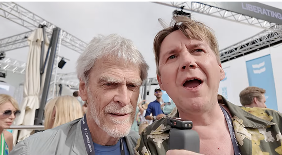
MOI: How do you think social media platforms like TikTok are changing the marketing game?
Rob: TikTok made social media fun again. It also meant that brands could get discovered rather than having to pay their way onto a feed. That meant the brands needed to get creative and make content people want to watch. TikTok has supercharged the creator economy as brands often want a quick and easy way to reach their audience, but it's also meant that brands that have invested in building their own channels have had to rip up their Meta playbook and create one just for TikTok. TikTok is so, so fun. I love it when brands like NutterButter go mega viral after committing to a bit for over two years - and now they're TikTok superstars!
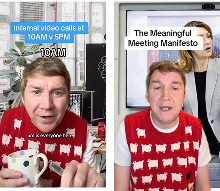
MOI: How would you bring a brand to life on social media?
Rob:I'd start with understanding what makes your brand interesting. What is the human truth? Then I'd think about ‘how do we build a brand universe around this?’. Then I'd hire a team of creators to bring this to life.
I'd call it a 6-month pilot. Give them absolute approval to experiment. No brand sign off - agree the parameters up front. And then I'd leave them alone for 6 months. I'd tell them to keep away from trends and focus on being totally original.
Separately, I'd explore longer form branded content on YouTube. This is my obsession for 2025. Gen Z don’t watch TV, they watch YouTube. But they're streaming it on the big TV in the lounge. How can your brand capture their attention with entertaining, long-form branded content. Any brands out there that want me to help them with this - please reach out!
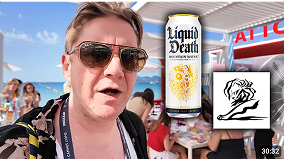
MOI: What are your thoughts on the future of humor in advertising?
Rob:I think there's always been a place for humor in advertising. I think it can be a great way to make your story interesting and memorable. When done well, it's amazing. But humor can be a tricky thing to get right, so you need to take risks and be surprising. I love brands that use humor to surprise me. I was lucky to be on the jury for Cannes Lions Social and Influencer in 2024. It was an amazing experience. We discussed humor a lot as it was a new category. I'm told that ‘humor’ is the new ‘purpose’. I think there's a place for both.


MOI: What's one of your favorite projects or collabs you've worked on?
Rob: One of my personal highlights has been turning my sketches into live performances. I've had the pleasure of performing at award shows, conferences and even agency Christmas parties. It means I can bring my stand-up experiences to the stage and experiment with the format. I've performed spoof pitch meetings, chemistry meetings and have been lucky to do this all around the world - New York, Dublin, Ibiza, Istanbul, Paris etc. I've also hosted many award shows including the Amazon Ad awards and Cannes Lions Charity Gala last year.
In terms of collabs – all the brands I've worked with have been amazing. I really enjoy the longer-term partnerships I've had with Sitecore, Pret, and Brother. I love seeing my sketches turned into amazing results for these brands. It just shows that funny sells.


MOI: How do you think social media platforms like TikTok are changing the marketing game?
Rob: TikTok made social media fun again. It also meant that brands could get discovered rather than having to pay their way onto a feed. That meant the brands needed to get creative and make content people want to watch. TikTok has supercharged the creator economy as brands often want a quick and easy way to reach their audience, but it's also meant that brands that have invested in building their own channels have had to rip up their Meta playbook and create one just for TikTok. TikTok is so, so fun. I love it when brands like NutterButter go mega viral after committing to a bit for over two years - and now they're TikTok superstars!
MOI: How would you bring a brand to life on social media?
Rob: I'd start with understanding what makes your brand interesting. What is the human truth? Then I'd think about ‘how do we build a brand universe around this?’. Then I'd hire a team of creators to bring this to life.
I'd call it a 6-month pilot. Give them absolute approval to experiment. No brand sign off - agree the parameters up front. And then I'd leave them alone for 6 months. I'd tell them to keep away from trends and focus on being totally original.
Separately, I'd explore longer form branded content on YouTube. This is my obsession for 2025. Gen Z don’t watch TV, they watch YouTube. But they're streaming it on the big TV in the lounge. How can your brand capture their attention with entertaining, long-form branded content. Any brands out there that want me to help them with this - please reach out!
MOI: What are your thoughts on the future of humor in advertising
Rob: I think there's always been a place for humor in advertising. I think it can be a great way to make your story interesting and memorable. When done well, it's amazing. But humor can be a tricky thing to get right, so you need to take risks and be surprising. I love brands that use humor to surprise me. I was lucky to be on the jury for Cannes Lions Social and Influencer in 2024. It was an amazing experience. We discussed humor a lot as it was a new category. I'm told that ‘humor’ is the new ‘purpose’. I think there's a place for both.

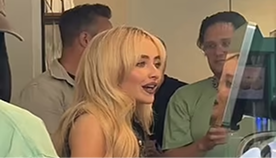
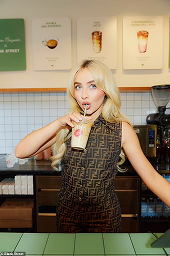
Collaborating with the right influencer matters. Just check out this stellar Blank Street x Sabrina Carpenter collab from last year. Not only is the pop icon a self-confessed Blank Street fan, but her hit single 'Espresso' made the collab even more fitting. So when she rocked up to a London branch of the café as a stand-in barista to give out free coffees, you best believe people showed up!
Image courtesy © The Daily Mail
Read here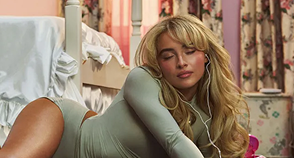
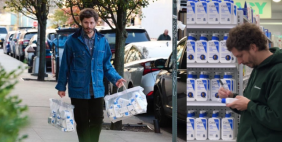
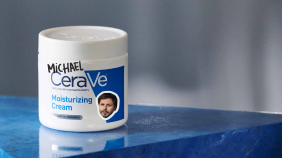
Michael Cera's partnership with CeraVe whipped up quite a frenzy online, after 'leaked' paparazzi photos, a new website, and an influencer interview stirred a conspiracy that the actor was the brains behind the brand. But CeraVe's response debunked the 'rumors': "while we are huge Michael fans, he did not develop CeraVe. Dermatologists did."
Article courtesy © CeraVe | Image courtesy © Famous Campaigns
Watch hereFrom Lana Del Rey to Tate McRae, Sabrina Carpenter and Nicola Coughlan – if there's one thing SKIMS has mastered, it's influencer marketing. Kim K is on it when it comes to sourcing the internet's hottest It Girl, resulting in culturally relevant and instantly viral campaigns that lean into the online community's latest pop culture obsessions.
Article courtesy © Homemade Social | Image courtesy © Women's Wear Daily
Read here

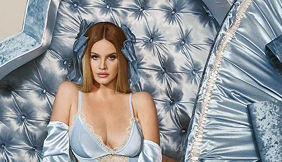



Collaborating with the right influencer matters. Just check out this stellar Blank Street x Sabrina Carpenter collab from last year. Not only is the pop icon a self-confessed Blank Street fan, but her hit single 'Espresso' made the collab even more fitting. So when she rocked up to a London branch of the café as a stand-in barista to give out free coffees, you best believe people showed up!
Image courtesy © The Daily Mail


From Lana Del Rey to Tate McRae, Sabrina Carpenter and Nicola Coughlan – if there's one thing SKIMS has mastered, it's influencer marketing. Kim K is on it when it comes to sourcing the internet's hottest It Girl, resulting in culturally relevant and instantly viral campaigns that lean into the online community's latest pop culture obsessions.
Article courtesy © Homemade Social | Image courtesy © Women's Wear Daily



Michael Cera's partnership with CeraVe whipped up quite a frenzy online, after 'leaked' paparazzi photos, a new website, and an influencer interview stirred a conspiracy that the actor was the brains behind the brand. But CeraVe's response debunked the 'rumors': "while we are huge Michael fans, he did not develop CeraVe. Dermatologists did."
Article courtesy © CeraVe | Image courtesy © Famous Campaigns
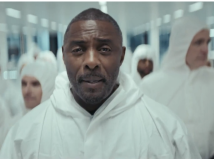
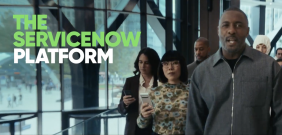
Influencer marketing isn't just for B2C! In ServiceNow's 'Put AI to Work' campaign, Idris Elba plays a chief executive pointing out all the ways AI is helping his business. And the cherry on top? Idris Elba is actually a ServiceNow customer in real life – making it the perfect partnership.
Article courtesy © Fast Company, Stephanie Mehta |
Image courtesy © Little Black Book
Gwen Stefani, Travis Barker and Billy Idol team up in this second installment of Workday's Rockstar ads, challenging office workers on who the 'real rock stars of business' are. Who said Finance and HR can't be edgy?!
Article and image © ERP Today, Yoana Cholteeva
Read here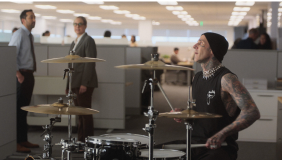
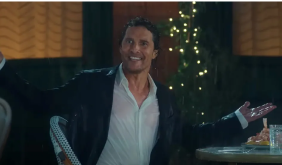

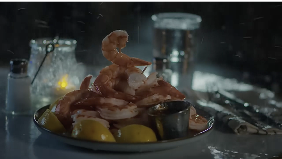
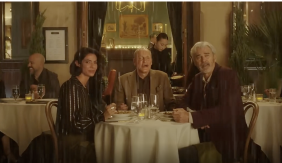
Salesforce also got in on the influencer action this year for the Super Bowl. Starring Matthew McConaughey, their 'What AI Was Meant to Be' campaign shows a series of humorous yet unfortunate scenarios that could have been avoided with Agentforce (Salesforce's AI tool). The company is reported to be paying McConaughey over $10 million annually to be their creative advisor and TV pitchman.
Article and image © AdWeek, Trishla Ostwal
Read here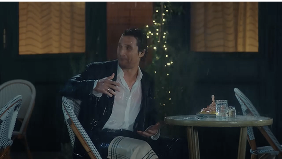



Influencer marketing isn't just for B2C! In ServiceNow's 'Put AI to Work' campaign, Idris Elba plays a chief executive pointing out all the ways AI is helping his business. And the cherry on top? Idris Elba is actually a ServiceNow customer in real life – making it the perfect partnership.
Article courtesy © Fast Company, Stephanie Mehta |
Image courtesy © Little Black Book

Gwen Stefani, Travis Barker and Billy Idol team up in this second installment of Workday's Rockstar ads, challenging office workers on who the 'real rock stars of business' are. Who said Finance and HR can't be edgy?!
Article and image © ERP Today, Yoana Cholteeva


Salesforce also got in on the influencer action this year for the Super Bowl. Starring Matthew McConaughey, their 'What AI Was Meant to Be' campaign shows a series of humorous yet unfortunate scenarios that could have been avoided with Agentforce (Salesforce's AI tool). The company is reported to be paying McConaughey over $10 million annually to be their creative advisor and TV pitchman.
Article and image © AdWeek, Trishla Ostwal



Turning Heads™
When expertise
becomes influence
Most B2B brands approach influence in a predictable, linear fashion—chasing LinkedIn metrics, pursuing the same industry voices, and defaulting to safe, established thought leaders with impressive job titles but little genuine cut-through.
At MOI, we believe the B2B influencers who truly turn heads are the ones who aren't just recycling conventional wisdom—they're challenging it, reshaping it, and sometimes completely upending it.
That's where Turning Heads comes in. It's our divergent thinking methodology that helps us look beyond the obvious influencer candidates and engagement metrics to discover authentic voices with genuine expertise and the ability to communicate it compellingly.
By bringing together different perspectives and expertise—from content strategists to experience designers to creative directors—we identify and partner with voices who don't just reach your audience but genuinely influence how they think.
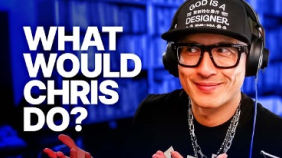
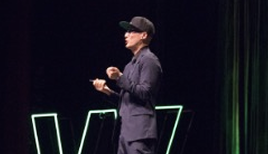

Let's be honest about something marketing folks seem oddly reluctant to admit: B2B influencer marketing isn't - and shouldn't be - anything like its D2C counterpart.
A group of gen alpha content creators sharing a 'paid for' 'reality' living experiment in a beach house near San Diego won't help you sell more of your enterprise-scale cyber security solutions any time soon. Thankfully.
The problem isn't that B2B brands shouldn't use influencers - it's that they're looking at entirely the wrong model. When your product requires committee approval, affects hundreds of employees, and costs six or seven figures, inspiration doesn't come from someone with a ring light and a dream.
If you want to understand what effective B2B influence really looks like, you’ve got to look at someone like Chris Do and his platform, The Futur.
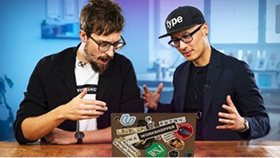
Do isn't a "content creator" who decided to pivot into business advice. He's a design professional with over 25 years of experience whose agency has worked with brands like Nike, Xbox, and Mercedes-Benz. His authority isn't manufactured; it has been earned through decades of actual expertise.
What makes him particularly fascinating is that he's managed to bring the engagement and sophisticated communication style typically associated with consumer marketing to B2B, without sacrificing an ounce of substance. His content is visually compelling, personality-driven, and genuinely valuable.
The proof’s in the reach of his influence. Brands like Adobe haven't partnered with Chris Do because he'll make them seem "cool". They've partnered with him because he makes their audience smarter. And that's the distinction that matters.
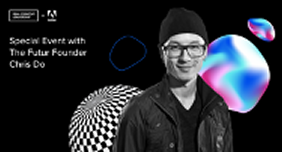



Let's be honest about something marketing folks seem oddly reluctant to admit: B2B influencer marketing isn't - and shouldn't be - anything like its D2C counterpart.
A group of gen alpha content creators sharing a 'paid for' 'reality' living experiment in a beach house near San Diego won't help you sell more of your enterprise-scale cyber security solutions any time soon. Thankfully.
The problem isn't that B2B brands shouldn't use influencers - it's that they're looking at entirely the wrong model. When your product requires committee approval, affects hundreds of employees, and costs six or seven figures, inspiration doesn't come from someone with a ring light and a dream.
If you want to understand what effective B2B influence really looks like, you’ve got to look at someone like Chris Do and his platform, The Futur.

Do isn't a "content creator" who decided to pivot into business advice. He's a design professional with over 25 years of experience whose agency has worked with brands like Nike, Xbox, and Mercedes-Benz. His authority isn't manufactured; it has been earned through decades of actual expertise.
What makes him particularly fascinating is that he's managed to bring the engagement and sophisticated communication style typically associated with consumer marketing to B2B, without sacrificing an ounce of substance. His content is visually compelling, personality-driven, and genuinely valuable.

The proof’s in the reach of his influence. Brands like Adobe haven't partnered with Chris Do because he'll make them seem "cool". They've partnered with him because he makes their audience smarter. And that's the distinction that matters.
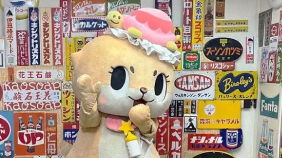

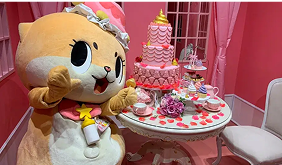
A mischievous baby otter overthrowing a city's official mascot? Now that's guaranteed to get some attention. Chiitan has become a beloved harbinger of chaos in Japan, based off the Susaki City's official mascot – except Chiitan is not your friendly neighbourhood mascot. No, instead, you'll find them wielding baseball bats, breaking trampolines, and shooting a bow and arrow while riding a bike. You know, your usual stuff...
Article and image © Yume Twins, Devon Lord-Moncrief
Read here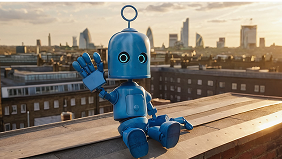
Want to make headlines? Create a lovable, iconic mascot...then kill it. Or at least PRETEND to kill it (à la Duolingo). After announcing the shocking and unexpected demise of the beloved Duo, the number of Duolingo mentions online spiked by about 25,560%. But worry not – it was all a clever marketing ruse, and Duo is, in fact, alive and well!
Article courtesy © Meltwater, Ann-Derrick Gaillot and Elena Tarasova | Image courtesy © Adweek
Read here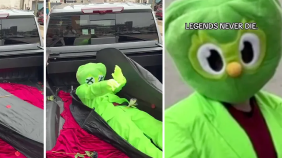
If you're sick of GenAI butchering your brand assets, you're not alone. VCCP's AI creative agency has launched a solution for their founding client, O2, called The Bubl Generator. It creates custom imagery of O2's mascot, Bubl, based on client prompts – so they can create images of Bubl in any imaginable scenario, without the time and cost restraints.
Article and image © Little Black Book
Read here


A mischievous baby otter overthrowing a city's official mascot? Now that's guaranteed to get some attention. Chiitan has become a beloved harbinger of chaos in Japan, based off the Susaki City's official mascot – except Chiitan is not your friendly neighbourhood mascot. No, instead, you'll find them wielding baseball bats, breaking trampolines, and shooting a bow and arrow while riding a bike. You know, your usual stuff...
Article and image © Yume Twins, Devon Lord-Moncrief

Want to make headlines? Create a lovable, iconic mascot...then kill it. Or at least PRETEND to kill it (à la Duolingo). After announcing the shocking and unexpected demise of the beloved Duo, the number of Duolingo mentions online spiked by about 25,560%. But worry not – it was all a clever marketing ruse, and Duo is, in fact, alive and well!
Article courtesy © Meltwater, Ann-Derrick Gaillot and Elena Tarasova | Image courtesy © Adweek

If you're sick of GenAI butchering your brand assets, you're not alone. VCCP's AI creative agency has launched a solution for their founding client, O2, called The Bubl Generator. It creates custom imagery of O2's mascot, Bubl, based on client prompts – so they can create images of Bubl in any imaginable scenario, without the time and cost restraints.
Article and image © Little Black Book
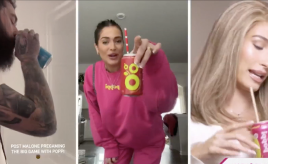
PR gifts are par for the course with influencer marketing – but one wrong move can cause a whole lot of backlash. After gifting major influencers with Poppi vending machines as part of their Super Bowl campaign, users labelled the brand as "out of touch", saying the gifts should have been sent to schools or hospitals instead of "already wealthy influencers".
Image and article © Today, Joseph Lamour
Read hereDidn't you know? Apparently tense protests and social justice movements can alllll be resolved with a can of Pepsi – or at least that's what the 2017 ad featuring Kendall Jenner would have you believe. Over-simplified, tone deaf and totally insensitive, the ad was pulled after just 24 hours of being live.
Article courtesy © Time, Daniel D'Addario | Image courtesy © BBC News
Read here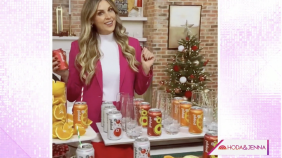

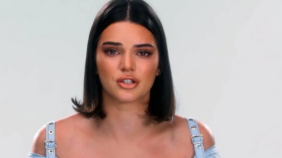
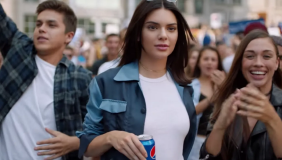
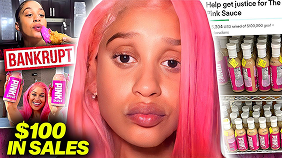
Chef P's meteoric rise and subsequent downfall are a stark reminder that in today's digital age, the journey from fame to infamy can be incredibly swift. The story of the Pink Sauce is more than just about a failed product; it's about the perils of ignoring regulations, the importance of business preparedness, and the vital need for transparency and accountability. For those looking to translate internet fame into lasting success, Chef P's experience offers valuable lessons.
Image and article © Gistly, Adam S.
Read here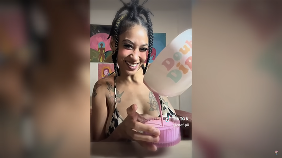
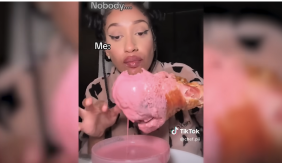



PR gifts are par for the course with influencer marketing – but one wrong move can cause a whole lot of backlash. After gifting major influencers with Poppi vending machines as part of their Super Bowl campaign, users labelled the brand as "out of touch", saying the gifts should have been sent to schools or hospitals instead of "already wealthy influencers".
Image and article © Today, Joseph Lamour


Didn't you know? Apparently tense protests and social justice movements can alllll be resolved with a can of Pepsi – or at least that's what the 2017 ad featuring Kendall Jenner would have you believe. Over-simplified, tone deaf and totally insensitive, the ad was pulled after just 24 hours of being live.
Article courtesy © Time, Daniel D'Addario | Image courtesy © BBC News

Chef P's meteoric rise and subsequent downfall are a stark reminder that in today's digital age, the journey from fame to infamy can be incredibly swift. The story of the Pink Sauce is more than just about a failed product; it's about the perils of ignoring regulations, the importance of business preparedness, and the vital need for transparency and accountability. For those looking to translate internet fame into lasting success, Chef P's experience offers valuable lessons.
Image and article © Gistly, Adam S.


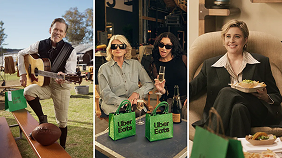
One look at this year's Super Bowl ads, and you can see celebs and mascots are taking over. From Instacart's all-star brand mascot lineup to UberEats' celeb overload – brands are increasingly leaning towards familiar faces for instant memorability.
Article courtesy © Digiday, Kristina Monllos | Image courtesy © Instacart and Adweek
Read hereGet it right, and your brand mascot can become their own internet celebrity. Scrub Daddy has built a social media empire on its quirky, self-aware and cheeky content tailored towards Gen Z. Collab-ing with brands like Dunkin' Donuts and Duolingo, the sponge mascot has seemingly become an influencer in its own right!
Image courtesy © Ad Age
Scrub Daddy uses TikTok to reach Gen Z | Ad Age
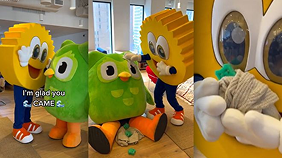
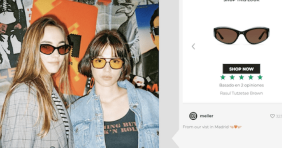
Expect to see the rise of the micro-influencer! High-profile isn't always the way to go. Micro-influencers are sometimes a far more effective choice – fostering more intimate and interactive relationships with their followers, and coming across as a much more authentic partnership.
Image courtesy © Statusphere
Read hereEver heard of virtual influencers? Well, they're taking the internet by storm. Brands like Calvin Klein, Samsung and Prada have partnered with CGI influencers like Lil Maquela, who boasts over 3m followers on Instagram.
Article and image © Fashion Monitor, Dale Barnett
Read here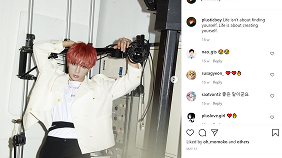
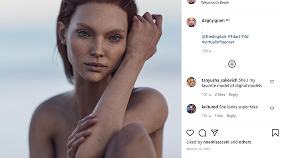
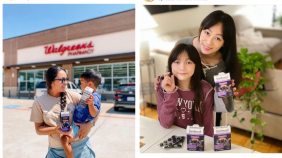

What's better as the face of your brand: a celebrity ambassador, or an iconic mascot? Both have their place – but which will come out on top in 2025?


One look at this year's Super Bowl ads, and you can see celebs and mascots are taking over. From Instacart's all-star brand mascot lineup to UberEats' celeb overload – brands are increasingly leaning towards familiar faces for instant memorability.
Article courtesy © Digiday, Kristina Monllos |
Image courtesy © Instacart and Adweek

Get it right, and your brand mascot can become their own internet celebrity. Scrub Daddy has built a social media empire on its quirky, self-aware and cheeky content tailored towards Gen Z. Collab-ing with brands like Dunkin' Donuts and Duolingo, the sponge mascot has seemingly become an influencer in its own right!
Image courtesy © Ad Age
Scrub Daddy uses TikTok to reach Gen Z | Ad Age


Expect to see the rise of the micro-influencer! High-profile isn't always the way to go. Micro-influencers are sometimes a far more effective choice – fostering more intimate and interactive relationships with their followers, and coming across as a much more authentic partnership.
Image courtesy © Statusphere


Ever heard of virtual influencers? Well, they're taking the internet by storm. Brands like Calvin Klein, Samsung and Prada have partnered with CGI influencers like Lil Maquela, who boasts over 3m followers on Instagram.
Article and image © Fashion Monitor, Dale Barnett
Need inspiration for your next campaign, or want to chat with our global Creative
Team?
creative@moi-global.com
Get those creative juice flowing with head-turning
examples of creativity, straight to your inbox.